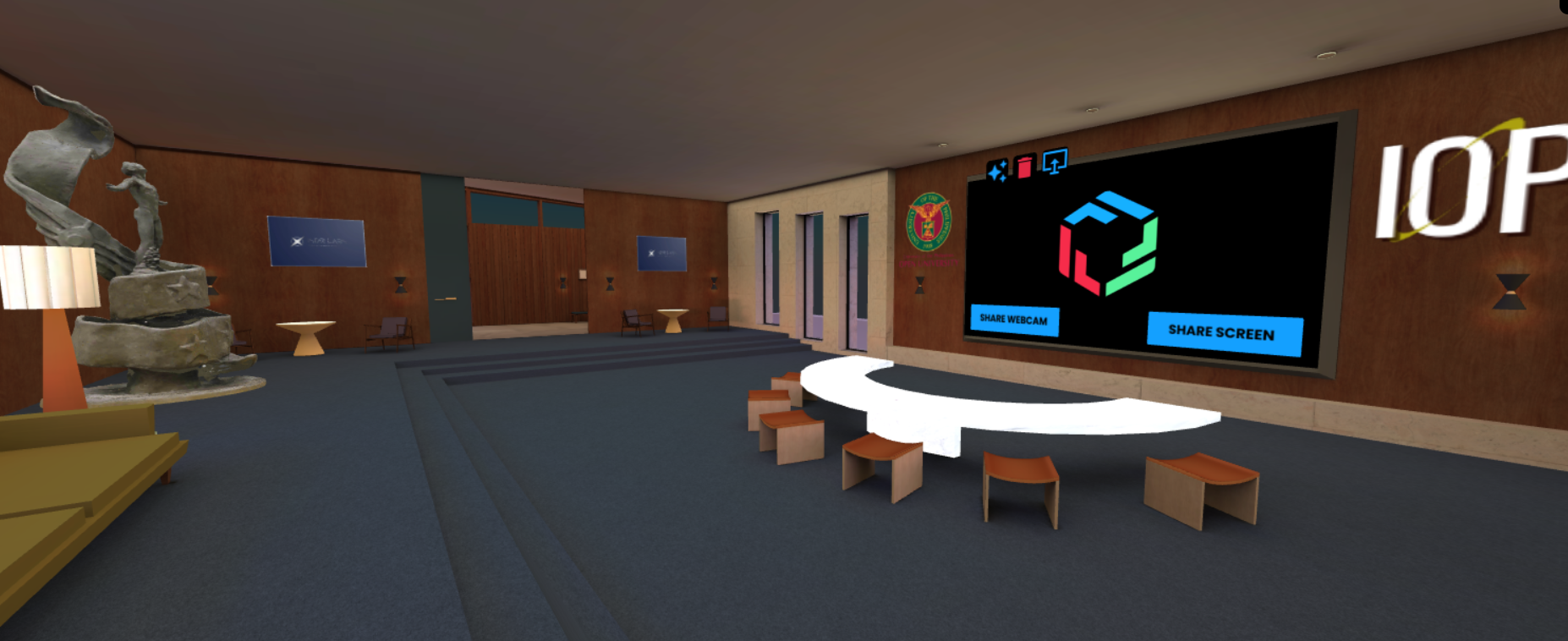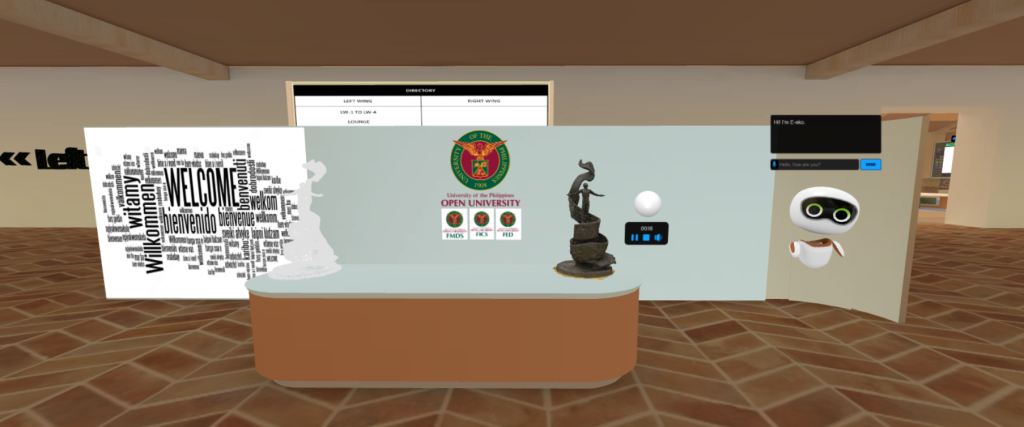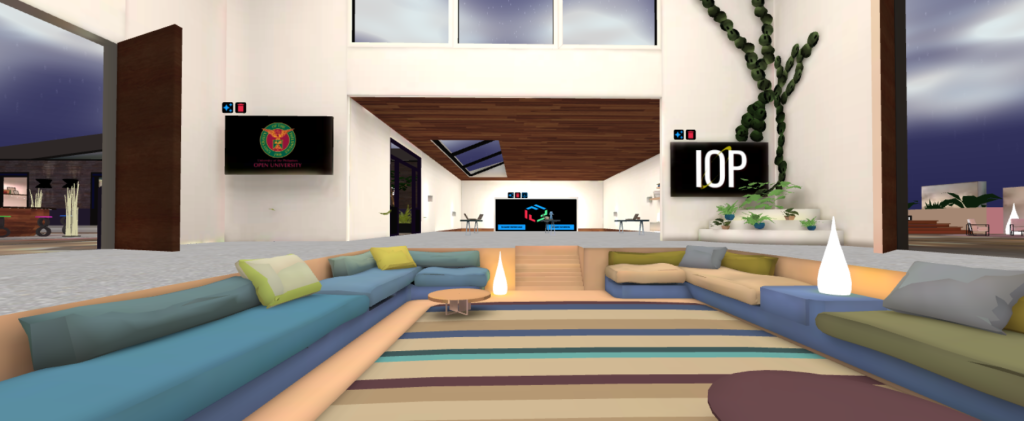All currently available virtual spaces utilize the FrameVR Platform
Compatible with desktop, tablet, mobile, and VR HMDs.
Click on the desired image to warp into the room.

(8 Person Max)

(8 Person Max)

(300 Person Max)
Virtual rooms have significantly reshaped the landscape of research and education, offering transformative opportunities for collaboration, learning, and knowledge dissemination. In both fields, these digital environments enable participants to engage in real-time communication, share resources, and collaborate across geographical boundaries, enhancing the accessibility and flexibility of academic and research-based activities.
In the context of research, virtual rooms provide a versatile platform for collaborative work among researchers, academics, and institutions. Researchers from different parts of the world can engage in discussions, share data, and brainstorm ideas without the logistical challenges of in-person meetings. Virtual rooms facilitate the seamless exchange of ideas, fostering global collaborations that may otherwise be hindered by distance or time constraints. Tools integrated within these platforms, such as screen sharing, document collaboration, and data visualization features, support the analysis and interpretation of research findings. Additionally, these spaces allow for virtual conferences, symposiums, and workshops, where researchers can present their work to peers, participate in panel discussions, and receive feedback in real-time.
For academic institutions, virtual classrooms and research hubs have become integral to modern educational practices. Virtual rooms enable instructors to deliver lectures, hold discussions, and engage with students in interactive ways. These platforms often include features like video conferencing, chat functions, and digital whiteboards, creating an environment that encourages active participation and peer collaboration. Virtual rooms in education promote inclusivity by allowing students to attend classes and access resources from anywhere in the world, overcoming barriers related to geographic location, time zones, and physical disabilities. This flexibility is particularly valuable for distance learning programs and higher education institutions that cater to diverse student populations.
The integration of virtual rooms in education also supports collaborative research and project-based learning. Students can work together on research projects, communicate with mentors, and access resources from various academic disciplines, regardless of their physical location. Virtual spaces can also host online libraries, databases, and repositories, making a wide range of academic materials and research papers readily available. This open access to knowledge encourages a more democratic approach to education and research, allowing individuals and institutions to share insights and innovations with a global audience.
In addition to real-time interaction, virtual rooms in education and research offer the advantage of asynchronous learning and collaboration. Recorded lectures, presentations, and research seminars can be made available for students and researchers to revisit at their convenience, supporting self-paced learning and in-depth study. Virtual environments also allow for the creation of discussion forums, group projects, and peer-reviewed submissions, fostering continuous engagement with the material.
As technology advances, virtual rooms are becoming more immersive and interactive, with emerging technologies such as virtual reality (VR) and augmented reality (AR) being integrated into educational and research platforms. These innovations have the potential to further enhance engagement by creating more immersive learning environments and interactive research simulations.
In conclusion, virtual rooms have become an essential tool in modern research and education, offering unprecedented opportunities for collaboration, learning, and knowledge-sharing. They provide a flexible, accessible, and scalable solution for researchers and educators, facilitating cross-border communication and engagement while supporting diverse learning and research needs. As these technologies continue to evolve, virtual rooms will play an increasingly vital role in advancing education and research, enabling global connectivity and innovation.
Powered by:



